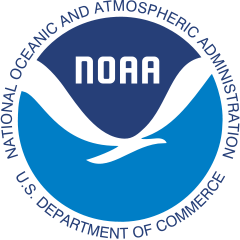This study investigated the spatio-temporal features of the serious positive precipitation bias over the southwestern equatorial Indian Ocean, found in most current coupled and uncoupled general circulation models, and its links with the large scale monsoon circulation. The study attempted to answer two questions: Is there a common identifiable mechanism forcing the local bias? Does the local bias have an influence on the continental simulated monsoon precipitation? Read More…
Climate impacts on marine ecosystems arise from a combination of direct influences of physical climate on organisms (e.g., temperature effects on metabolic process) and indirect effects controlled by interactions with directly affected organisms. Indirect influences may originate with primary producers (i.e., phytoplankton) and propagate upward from the bottom of the food web or with higher trophic levels (i.e., fish) and propagate downward. Elucidating and predicting the response of living marine resources to climate and fishing pressure thus requires movement toward models that resolve interactions spanning physics to fish in an integrated way. Read More…
North Atlantic tropical storms (TS) are a major climate hazard to North America, and have exhibited variability and change on decadal timescales. Therefore, understanding and predicting future decadal TS activity on decadal timescales is central to NOAA’s mission and highly relevant to society. Read More…
An ongoing challenge in quantifying aerosols’ impact on the climate is determining an optimal way of calculating aerosols’ radiative forcing. For absorbing aerosols, in particular, studies have shown that a forcing calculation that does not include the tropospheric response to absorbing aerosol (instantaneous forcing) is a poor proxy for the change in global mean surface temperature caused by the aerosol. Read More…
An intercomparison of global atmospheric model simulations of tropical convection has been presented and evaluated with available observations collected during the TWP-ICE field experiment. Short simulations initialized from the ECMWF analysis have been used to constrain model large-scale states and thus isolate model systematic biases originating from various physical parameterizations. With realistic thermodynamic and kinematic fields captured in various weather regimes (wet, dry, and break), model precipitation, cloud properties (LWC, IWC, cloud fraction), radiation, and vertical heating profiles respond accordingly in these regimes. Despite somewhat realistically simulated precipitation, there are substantial cloud property discrepancies among the models, which are mainly influenced by cloud and convective parameterizations. Read More…
High resolution global atmospheric models are becoming more credible tools for studying the effects of global warming on tropical cyclones, and we need to understand how those aspects of the models in which we have relatively low confidence affect the simulations. The goal of this research was to systematically explore and understand how some key parameters in this global atmospheric model affect the simulation of tropical cyclone frequency. Read More…
We often use feedback terminology to help us understand why models differ in their estimates of the magnitude of the surface temperature changes produced by a given change in the Earth’s energy balance, such as that due to an increase in carbon dioxide. But several lines of evidence have suggested that the methodology used to define these feedbacks is far from optimal, making the typical model’s behavior look more complicated than it really is. Our goal in this short note was to propose an alternative methodology that simplifies the analysis in several ways. Read More…
The fifth phase of the Coupled Model Intercomparison Project (CMIP5) will produce a coordinated multi-model dataset that is designed to advance our knowledge of climate variability and climate change. Researchers worldwide will analyze the model output and produce results that will underlie the forthcoming IPCC Fifth Assessment Report. Unprecedented in scale, CMIP5 has attracted participation from all major climate modeling groups. Building on previous CMIP efforts, CMIP5 includes “long-term” simulations of 20th century climate and projections for the 21st century and beyond . Read More…
Oxygen minimum zones (OMZs) exclude many classes of the biological community and are major sites of fixed nitrogen removal from the open ocean. Previous estimates of rates of fixed nitrogen loss through denitrification in the pelagic ocean and in sediments have been unable to match estimates of the supply of fixed nitrogen via N2 fixation, rivers, and atmospheric deposition. This has led some scientists to the conclusion that the global ocean nitrogen cycle is out of balance, and the oceans are accumulating fixed nitrogen. However, commonly-used gridded data sets such as the World Ocean Atlas (WOA) tend to overestimate the concentration of O2 compared to measurements in grids 1 where O2 falls in the suboxic range (O2 < 2 – 10 μM), thereby underestimating the extent of O2 depletion in OMZs. Read More…
The goal of this research is to evaluate the fidelity of GFDL climate models in reproducing the characteristics of summertime heat waves in North America, and to examine the model-projected changes of these characteristics in the 21st century.
North American incurs considerable economic costs due to heat waves. Understanding of the processes contributing to heat waves, and projecting changes in their characteristics in the 21st century, are an integral part of the NOAA mission to provide scientific information on the present and future states of the climate system. Read More…


